Ryan Hall's Blog, page 318
November 24, 2015
The 50 Best Running Stores in America for 2015
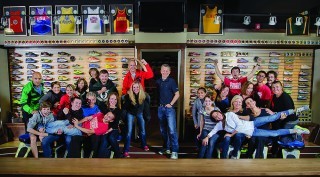
Naperville Running Company
A great running store is the cornerstone of a healthy running community. It not only provides the latest knowledge on shoes and gear, but also fosters a passion for the sport by building a thriving community around it. Only through exemplary customer service, insightful industry knowledge and well-organized provisions of run programs and events can a store be considered one of the best—especially in an era dominated by online shopping. A great store is so much more than just a place to buy gear.
Hence, every year Competitor magazine partners with Running Insight trade magazine to celebrate and identify these qualities in the 50 best running stores across the nation. The process begins with readers nominating their favorite shops on Competitor.com, followed by diligent evaluations executed by undercover shoppers.
Here we reveal the full list of 50 best stores and the final four in the running for Store of the Year, in which the winner will be announced on Dec. 3 at The Running Event trade show in Austin, Texas.
RELATED: Insights to Excellence from the 50 Best Running Stores in America
The Final Four
One of these four shops will be revealed as the 2015 Running Store of the Year on Dec. 3 based on criteria that include best retail environment, shoe-fitting checkout process, community service and credit ratings from vendors.
Red Coyote Running and Fitness – Oklahoma City
West Stride – Atlanta
Fleet Feet Rochester – Rochester, N.Y.
A Snail’s Pace – Fountain Valley, Calif.
RELATED: Get to Know the 2015 Finalists of the 50 Best Running Stores in America
RELATED: Top Shops—Past Winners of The Running Store of the Year Honors
The 50 Best
Alabama
Fleet Feet Huntsville
Alaska
Skinny Raven, Anchorage
Arkansas
Rush Running Co., Bentonville
Arizona
Sole Sports, Tempe
California
A Runner’s Mind, San Francisco
A Snail’s Pace, Fountain Valley
Fleet Feet Aptos
Florida
1st Place Sports, Jacksonville
Fit2Run, Miami
FitNiche, Lakeland
Jacksonville Running Co., Jacksonville
Running Zone, Melbourne
Runner’s Depot, Davie
Track Shack, Orlando
Georgia
Big Peach Running Co., Atlanta
West Stride, Atlanta
Illinois
Dick Pond Athletics, Schaumburg
Fleet Feet Chicago, Chicago
Naperville Running Co., Naperville
Running Central, Peoria
Indiana
Fleet Feet Fort Wayne
Three Rivers Running, Fort Wayne
Kansas
KC Running & Sports Medicine Store, Leawood
Maine
Fleet Feet Maine, Portland
Maryland
Charm City Run, Maryland
Fleet Feet Baltimore
Massachusetts
Marathon Sports, Boston
New England Running Co., Beverly
Whirlaway Sports, Methuen
Michigan
Gazelle Sports, Kalamazoo
Playmakers, Okemos
Minnesota
Fleet Feet Minneapolis
Mill City Running, Minneapolis
Missouri
Big River Running, St. Louis
The Running Well Store, Kansas City
Montana
Runner’s Edge, Missoula
New Jersey
Haddonfield Running Co., Haddonfield
New York
Fleet Feet Rochester
Fleet Feet Syracuse
Medved Running & Walking Outfitters, Rochester
Sayville Running Co., Sayville
North Carolina
Bull City Running Co., Durham
Run For Your Life, Charlotte
Ohio
Columbus Running Co., Dublin
Second Sole, Akron
Up and Running, Dayton
Oklahoma
Red Coyote Running and Fitness, Oklahoma City
South Carolina
Fleet Feet Mt. Pleasant
Tennessee
Fleet Feet Nashville
Texas
iRun Texas, San Antonio
Luke’s Locker, Dallas
Utah
Salt Lake Running Co.
Virginia
Pacers, Arlington
Potomac River Running, Arlington
The post The 50 Best Running Stores in America for 2015 appeared first on Competitor.com.
Workout Of The Week: Anaerobic Training For Runners

A little sprinting goes a long way. Photo: Shutterstock.com
Some runners have funny ideas about the meaning of the word “anaerobic.” It’s not their fault, though, because even many exercise physiologists harbor an outdated understanding of aerobic and anaerobic metabolism. Often I hear athletes talk about “going anaerobic” when their running intensity exceeds the anaerobic or lactate threshold, which is a moderately high but not extremely high intensity—one that most fit individuals can sustain for a full hour. This expression—“going anaerobic”—reflects an incorrect belief that the working muscles get their energy either entirely aerobically or entirely anaerobically, whereas in fact they almost always get their energy from both systems simultaneously, with the balance shifting gradually from aerobic toward anaerobic as exercise intensity increases. And indeed, exercise intensity must increase far above the lactate threshold before the muscles even get a majority of their energy anaerobically. If you were to run as far as you could in two minutes (in other words, as hard as you could for two minutes), your muscles would get about half of their energy aerobically during that effort.
RELATED: Seven Ways To Improve Speed Without Increasing Mileage
This much is understood by most exercise scientists. But what all too many of these professionals don’t know is that most of what is classified as anaerobic metabolism is actually just incomplete aerobic metabolism. Research has shown that roughly 75 percent of the lactate that is produced through the anaerobic breakdown of glucose is further broken down aerobically within the muscles cells to release energy. The rest is shuttled to other organs and tissues, where it is either broken down aerobically to supply energy or converted back into glucose for future aerobic breakdown.
If anaerobic glycolysis is reclassified as incomplete aerobic glycolysis, as it should be, then virtually the only truly anaerobic metabolism that occurs in the muscles is the breakdown of high-energy phosphates. This type of metabolism becomes predominant only at the very highest exercise intensities, such as during 100-meter sprints.
While true anaerobic metabolism has only a tiny place in running, anaerobic fitness—or speed and power—is critical to distance running performance. The average runner thinks of factors such as VO2max, fat-burning capacity and running economy as being the keys to running performance and tends to forget about pure speed. But if you set aside your prejudices and look at the speed of world-class distance runners, you will see that pure speed is at least as important as the other performance keys. Most 2:11 marathoners are capable of running a sub-50-second 400m. Folks, that is flying!
Research confirms the importance of pure speed to distance running performance. A study by Finnish researchers found that 20m sprint times were nearly as powerful a predictor of 5,000m race times as VO2max. Studies by the same group have demonstrated that explosive power training effectively improves distance-running performance.
It may seem strange that anaerobic training enhances distance-running performance when there is virtually no anaerobic component to actual distance racing, but it’s true. The primary reason appears to be that anaerobic training increases the bounciness of the stride, so that the feet come off the ground faster and more forcefully. This improves running economy, because half of the energy that propels forward motion during running is supplied not by the body but by the force of impact, and the less time the feet are in contact with the ground, the less of that free energy is lost.
In short, for runners the point of performing types of training that involve anaerobic metabolism is not to developing anaerobic metabolic capacity but rather to increase the speed and power characteristics of the muscle fibers.
Therefore, true anaerobic efforts deserve a bigger place in your training than they have in your races. There are three specific types of anaerobic training that you should be sure to include in your training regimen: sprints, plyometrics and weightlifting.
Sprinting
It’s amazing how few runners ever run at full speed—I mean full speed, the way you ran virtually every time you ran as a kid. All-out sprinting is not only exhilarating, as every six-year-old knows, but it is also great training, even for distance runners. Sprint training increases stride power and running economy, benefits that transfer all the way down to marathon speed and below. Sprinting also forces your body to confront the technical limiters in your stride, resulting in better form.
A little sprinting goes a long way. Elite coach Brad Hudson has his athletes perform a set of 4-12 steep hill sprints of 8-10 seconds once a week after an easy run. The steep hill serves to reduce the risk of hamstring and Achilles tendon injuries.
RELATED: Steep Hill Sprints
This is about all the sprinting you ever need to do, except at times when increasing your raw speed is a major fitness priority, when you will also want to perform repeated flat sprints of 100 to 300 meters, also once a week. Start with shorter sprints and extend them gradually over several weeks in order to first increase your maximum speed and then blend your new speed with endurance.
Plyometrics
Developed in the 1960s by Eastern Bloc sports coaches, plyometrics consists primarily of jumping exercises designed to enhance the power of the legs. Studies have shown that adding a small amount of plyometrics to the training regimen of endurance athletes improves performance. A 2003 study by Australian researchers found that the addition of plyometrics to the training of high-level runners for six weeks resulted in an average 2.7-percent improvement in 3K race times.
An example of a good plyometrics exercise for runners is the single-leg box jump. Stand on your left foot facing a sturdy platform 12 to 18 inches high (such as stacked aerobics steps). Bend your left leg, swing your arms back then forward to generate momentum, and jump up onto the platform landing on your left foot. Do not allow your right foot to touch the platform. Immediately jump back down, also landing on your left foot. Continue jumping for 30 seconds with the left leg, then switch to the right.
Few runners care to make time to add plyometrics workouts to their training regimen. But you don’t have to. As an alternative, incorporate some single-leg running into one or two of the runs you’re already doing every week. Start by running on just your right leg for 10 strides and then on just your left leg for 10 strides. Gradually increase the number of strides you do on each leg until you reach 30 strides per leg. You will notice that it gets easier to go longer on one leg, which is a sign that your legs are adapting to the stress and your stride is becoming more efficient.
Weightlifting
As with sprinting and plyometrics, a little weightlifting goes a long way for runners. If you select your exercises well and really get after them, you can gain significant performance benefits from just three, 15-minute weightlifting sessions per week.
The mistake that many runners make is going too light with their loads. There is a common misconception among runners that they should use lighter loads and greater numbers of repetitions than others do because, after all, they are endurance athletes. But the point of going to the gym is not to get more of what you are already getting from your endurance training. Distance running does not build strength. Building strength enhances running performance in a way that distance running cannot match. The most effective way to build strength is with heavy loads. Runners should lift heavy loads!
MORE: The 10 Best Mobility Exercises For Runners
Studies prove it. For example, in a recent study by Norwegian researchers, a group of 17 runners experienced a 21-percent increase in aerobic endurance after doing heavy barbell half-squats for eight weeks. How heavy? The runners did four sets of just four repetitions with their 4RM max load—that is, with the greatest amount of weight that each runner could lift four times.
Here’s an effective total-body strength workout for runners that includes just four exercises and takes no more than 15 minutes to complete.
Heavy Barbell Squat – 3 sets
Cable Low-High Pull* – 1 set pulling left to right, 1 set pulling right to left
*Stand with your left side facing a cable pulley station with the handle fixed at ankle height and pull the handle upward and across your body with both arms in a movement that somewhat resembles shoveling snow.
Single-Arm Dumbbell Snatch – 1 set with each arm
Cable Low-High Pull** – 1 set pulling left to right, 1 set pulling right to left
** Stand with your left side facing a cable pulley station with the handle fixed at head height and pull the handle downward and across your body with both arms in a movement that somewhat resembles chopping wood.
The post Workout Of The Week: Anaerobic Training For Runners appeared first on Competitor.com.
Kara Goucher to Run Rock ‘n’ Roll San Antonio

Photo: PhotoRun.net
In a tune-up for the U.S. Olympic Trials Marathon on Feb. 13 in Los Angeles, two-time Olympian Kara Goucher will run the Rock ‘n’ Roll San Antonio Half Marathon on Dec. 6.
“I am looking forward to racing at Rock ‘n’ Roll San Antonio with good health and good spirits as I continue towards the Olympic Trials Marathon,” Goucher said. “Competitor Group always puts on well-organized races with strong fields and I’m excited to get out and race.”
Goucher, 37, is fresh off a strong performance at the Big Sur Half Marathon, winning the race in 1:11:13. She’s aiming to make her third Olympic team—having represented the U.S. in the 10,000m in 2008 and in the marathon in 2012. She also owns a bronze medal in the 10,000m on the track from the 2007 IAAF World Championships.
The Rock ‘n’ Roll San Antonio Half Marathon takes runners on a tour of the south Texas city with a start and finish at the Alamodome. The weekend of events also includes a 5K, 10K, marathon and relay.
RELATED: Why I Run: Kara Goucher
The post Kara Goucher to Run Rock ‘n’ Roll San Antonio appeared first on Competitor.com.
Desi Linden Talks About Her Pre-Olympic Trials Marathon Build-Up
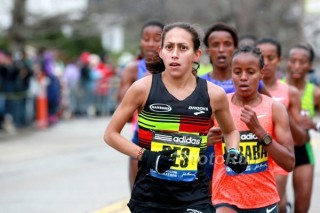
Everything came together for Desi Linden at the 2015 Boston Marathon, where she placed fourth in 2:25:39. She's hoping a strong 10- to 12-week buildup this winter will put her in position to finish among the top three at the 2016 U.S. Olympic Trials Marathon on Feb. 13 in Los Angeles. Photo: PhotoRun.net
On Feb. 13 in Los Angeles, Desiree Linden will try to make her second straight U.S. Olympic team in the marathon. She placed second at the 2012 U.S. Olympic Trials in Houston, but was forced to drop out of the Olympic marathon later that year in London because of an injury. With more than two strong years of running under her belt—including solid efforts in Boston in 2014 (10th, 2:23:54) and 2015 (4th, 2:25:39) and a sixth-place showing in the 10,000m at the U.S. outdoor track championships in June (32:53.50)—she’s ready for 2016. We caught up with her recently to talk about her pre-Olympic Trials training buildup and her expectations for the race.
When did you start preparing for this Olympic Trials?
To be honest, I think we sat down in 2012 when I was still injured and thought, “OK, how do I get back on the team in 2016?” So we’ve been thinking about Rio 2016 as far back as 2012. The last three years have been geared for heading back to the Trials, so it’s certainly something I’ve thought about a lot.
I think the biggest thing about Boston was that I felt like I was moving like myself again. I had a glimpse of that in New York [at the NYC Half in mid-March] after having some bumps along the way.
How did your effort in the 2015 Boston Marathon play into the grand scheme of things?
The training went right and I was able to perform at a very high level. I think that’s a great thing to use as a stepping stone for the next one. Being able to make the team and start focusing on the next one would be a really nice progression.
What will your pre-Olympic Trials buildup look like?
We’re starting in mid-November and a 10- to 12-week buildup is pretty normal. The first two weeks is just about building mileage. I’ll start in the 85-90-mile range and then slowly work up to about 115 over a few weeks and then top out at 120 to 125 miles. We’ll start getting into marathon-paced workouts not too far into the buildup. A few weeks after that, we’ll switch up to faster-than-marathon pace with the same types of workouts—like 5 x 2 miles and 3 x 3 miles at 10 to 15 seconds faster than marathon pace—and we’ll start hitting peak mileage about then—maybe 120 to 125 miles per week.
You’re obviously running twice a day most days, right?
Yeah, I run double sessions on most days. If it’s not a day in which I’m doing something of substance—a long run or a workout—I’m probably running twice. We’ll start small—8 miles in the morning, 4 miles in the afternoon, then to 10 and 4 and build up from there.
How long is your weekly long run during a marathon buildup?
I’ll only go up to 20 miles. In fact, I’ve only gone over that twice. Once during my Olympic buildup in 2012, I went up to 22 and apparently that’s a little too much. I’ll probably run 20 miles five times during my buildup to the Olympic Trials between early December and mid- to late January. Those are run a lot on feel, so once you start getting into it and you’re building your mileage, sometimes you just want to go out and cover the distance or get ‘time on feet’ but we do a lot of progression runs where the final 3 or 4 miles you’re running at marathon pace at the end of a 20-mile long run. And some days you just don’t have it, so you just cover the distance.
Which workouts do you do that start to give you an indication of your marathon fitness?
Our last big workouts are almost a month out from the race. About 4-5 weeks out, we’ll do the Hanson’s Marathon Simulator 26.2K at marathon pace and 2 x 6 miles about 5 seconds faster than marathon pace and an 8-mile tempo run. Those workouts are all smashed together in close proximity to each other over a week or so. From there, we mostly do lighter workouts where you’re touching on marathon pace after that.
The 2 x 6-mile workout is always a very big indicator. It’s the first time you step back from going 10 minutes faster than marathon pace and you feel pretty relaxed on that first one and then if you can hit that second one at the right pace and sense that it’s comfortably hard, it’s always a good indicator that you’re ready because it really comes on top of a lot of mileage. You’re tired and you’re beat up and if you can hit that, it’s a good sign. But really, there’s no one workout that if you hit or don’t hit you melt down.
For Boston this year, I was shooting for 5:20 pace for those 2 x 6 workouts. But when there are days where it’s super windy, you just go by effort and just roll with it.
Do you do most of your workouts on the roads or do you ever get on the track?
We do a couple of things on the track, usually any workout that’s shorter than mile repeats we’ll do on the track. So we might do 10 x 800 at 15 seconds per mile faster than marathon pace. Later on, we’ll do 6 or 8 x mile repeats at 5:10 or so. We’ll just do two of those workouts, just to feel fast, even though you’re not really going that fast. It’s all about cadence and rhythm and changing it up and turning your legs over a little bit.
What can you tell us about the Hansons-Brooks team training camp in Florida?
We’ll go down to Florida on about Dec. 28 and basically be training down there all the way through the time we travel to Los Angeles about four or five days before the Olympic Trials. It’s really a good way to get footing. Running in the cold doesn’t really bother anyone in our group in Michigan—it’s about finding good footing and not having to worry about slipping on ice or getting dinged up from something like that. It’s a good way to remove that elements and go down to Florida to get good quality work and know where your fitness is at.
I’ve been going to Kenya the last several years and it’s sort of the same mentality to that. You’re going down there to train and you have a block of time just to do the task at hand. You’re not distracted by things at home—whatever mundane, stupid things that get in the way at home that get in the way of getting rest or not eating right. That might mean going out with your friends for a beer instead of taking a nap or whatever. It will be good to go down to Florida and be with the team—runners who are like-minded individuals who have the same goals and some schedules.
At what point will you start looking forward to the race with some real excitement?
I think anytime I really hit a workout that’s comfortably hard and feel good coming out of it—you finish and you think you could have done two or three more reps—that’s when you start to get excited and you start looking forward to the next workout. As you get more fit, that happens more frequently, but then you also have to balance that with the days you feel flat and awful. But that’s OK, that’s part of the process. By the time you do those big indicator workouts four to five weeks out, you’re usually pretty excited about the race.
You’re hunkering down for 10 to 12 weeks and nobody knows what you’re doing, logging a lot of miles and workouts. It’s fun to think about that race because that’s your opportunity to say, “OK, this is what I’ve been up to.” That’s kind of how I look at it.
How long will your taper be?
Our taper is only about two weeks, maybe a week and a half. We keep running super late into the buildup. I’ll run a 12-miler the week of the race. It’s just trying to maintain that normal balance and routine of what you’re doing and not changing things too drastically so you wind up feeling lethargic and flat on race day. But it’s also about freshening up too. You slowly dial the mileage down and do some short bouts of quicker running.
The biggest thing is that I try to stay super relaxed about it and not overthink anything. We’ll have the travel to L.A. and the press conference once we get there, and those things sort of distract you. That’s a good thing at that point because you have way more time on your hands than you have had in previous weeks. I just try to stay as normal as possible. I think you have to focus on getting more rest during that time. When you dial back the mileage, you have more energy, you’re more excited and you’re feeling fresher.
What’s your outlook for the U.S. Olympic Trials race?
It’s awesome going into the Olympic Trials with so much experience. In 2008, that was my second marathon and I was super fit and ready to go and felt like I had a shot to be on the team. But a lack of experience really did me in. That was the moment where I really felt like I wanted to figure out the marathon and find out how I could do well at it. So it’s kind of fun to go back for a third time and know how I’ve progressed since then. It’s a super high-pressure situation but I feel confident going in based on my experience.
I would love to win the race. I’ve never won a marathon and I’ve never won a U.S. championship race of any kind, so that would be fantastic if it unfolds that way. But it is a unique race in which if you’re third, it’s just like winning. You don’t get a first-class ticket to Rio if you win the trials, you get the same thing as the second- and third-place finishers.
Do you pay attention to the chatter about what other athletes have been doing this fall?
I pay attention to it. I’m a fan of the sport and I want to know how everyone else is doing. I’m going to cheer for runners and am excited for them when they do well. When it comes to racing and preparation, the No. 1 goal is to focus on me and get myself prepared as possible. I think I’m capable of making the team, regardless of who does what in the meantime. I know that my main focus is to work on myself and get fit and if I do that, I know I have a great shot.
RELATED: Excitement Mounts as Olympic Trials Fast Approaches
The post Desi Linden Talks About Her Pre-Olympic Trials Marathon Build-Up appeared first on Competitor.com.
Trail of the Week: Lost Dog Trails, El Paso, Texas

Our Trail of the Week feature is made possible through a partnership with Trail Run Project.
The Lost Dog trails are some of the most scenic and technically challenging of the southwest desert. Roughly 14 square miles in size and part of the Franklin Mountains State Park, the area is crisscrossed with a large number of trails. Twenty-six of those trails, along with seven segments, are brought together in this 14-mile loop that highlights the best that Lost Dog has to offer: scenic views of three states and two countries, plant life which can only be found in the Chihuahuan Desert, challenging climbs, quick descents, and of course, rocks.
Trails around the Franklin Mountains are notorious for being rocky and technical. Smooth sections are rare; runners will frequently need to navigate large rocks. It all adds to the challenge, but it requires a heads-down approach to running—look up to enjoy the scenery for long and you’ll trip. The rugged terrain, combined with low-lying cacti, mean that trail shoes with rock plates are a must.
There is very little shade on the Lost Dog trails. Come prepared with more water than you think you’ll need.Finally… Do. Not. Touch. The. Cacti. Other than the spines, many types of cactus are covered in glochids, tiny barbed hairs which can become embedded by the hundreds, causing skin irritation. They’re best removed by duct tape or spreading white glue over the area and removing it when dry, but whatever you do, don’t use your mouth. Larger spines, on the other hand, pull straight out. And make wonderful souvenirs.
El Paso is hot in the summer and cold in the winter. The scenery is best in the late spring and summer when rain causes desert plants to bloom. Mornings are generally the best time to run as it avoids the heat or wind, depending on the time of year. Be sure to bring water, especially during the warmer months.
The Lost Dog area is maintained almost entirely by volunteers, so some sections may suffer from erosion after storms. The trails are popular among mountain bikers. Keep in mind that it may be safest to step off narrow sections of trail to allow them to pass, regardless of right of way.
A few areas provide opportunities to cut the route short, but runners willing to meet the challenges of this desert mountain trail will find it rewarding and fun.
The Data
Miles: 14.1
Runnable: 92 percent
Average Grade: 5 percent
Max Grade: 26 percent
Total Ascent: 1,900 feet
Total Descent: -1,900 feet
Highest Elevation: 4,863 feet
For a closer look, check out the interactive map, data, photos and virtual run simulator courtesy of Trail Run Project:
The post Trail of the Week: Lost Dog Trails, El Paso, Texas appeared first on Competitor.com.
Shoe Of The Week: Saucony Triumph ISO 2
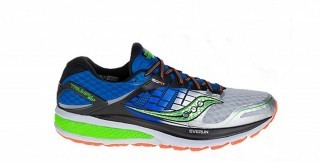
Few shoes have undergone as much change as the Triumph ISO 2 has the past two years while also coming out as spectacular (as this one has). Saucony retooled its flagship Triumph premium neutral cushioning shoe a year ago when it unveiled a dynamic new upper and fit system. Those significant updates made the shoe fit and feel much better, essentially creating a near-custom fit. This year, Saucony has revolutionized the Triumph with an innovative new foam called Everun—a patent-pending material that distributes impact energy over a larger area than EVA-based foams and, as a result, offers both reliable cushioning and amazing resiliency. The foam has been inserted into the lateral part of the heel and the topsole (essentially the top of the strobel board under the sockliner) and the combination makes for a crazy good ride that’s part impact-dampening smoothness and part energetic awesome sauce. The interior bootie construction and ISO Fit dynamic saddle system snug the foot down to the soft and secure chassis, allowing the foot to flex with the shoe and very fluidly rebound into the next stride. The Triumph ISO 2 is not quite as light or nimble as some of the new modern lightweight trainers, but it’s a very durable high-mileage shoe with as much or more “pop” than any shoe in its class. Although it’s not made for agile, fast-turnover running, our wear-testers considered it great for a variety of long runs, recovery runs and some uptempo progression runs.
This is the shoe for you if … you have a neutral or supinating gait and want a thickly cushioned high-mileage trainer that offers a dynamic ride and versatile performance.
Price: $150
Weights: 10.2 oz. (men’s size 9.0); 8.6 oz. (women’s size 7.0)
Heel-Toe Offset: 8mm; 30mm (heel), 22mm (forefoot)
RELATED: Shoe Of The Week—Altra Impulse
The post Shoe Of The Week: Saucony Triumph ISO 2 appeared first on Competitor.com.
November 23, 2015
4 Creative Speed Workouts To Beat The Winter Cold

Photo: Shutterstock.com
In many parts of the country, winter is rolling in early this year, making those cold early mornings and dark nights slightly less appealing—especially when it comes to doing speed workouts.
Fortunately, strong desire combined with a little creativity can go a long way. Give one of these four speedier sessions a shot next time you’re dreading heading out the door to try and run fast.
Parking Garage Hill Repeats
Yes, you can train in a parking garage! Just be careful when you go. Seek out an empty multi-story garage during off hours—early mornings, evenings or on weekends are best—and be alert while watching out for traffic. Wear something bright and visible so drivers can see you. If you can’t find a suitable relatively traffic-free garage, look for a long set of stairs at a snow-free stadium or even inside an office building (seriously, a back stairwell can be a great place to work on uphill running).
Warmup: Jog for 15-20 minutes (outside the parking garage), followed by 6-8 x 20-second strides.
Workout: Since the size of the garage will vary depending on what’s available to you, simply running from bottom to top—or one level to the next—and back down without much interruption makes for a great workout. If you want a more structured workout, short “uphill” sprints in the range of 8-15 seconds are likely going to be your best option and will help you develop speed, power and strength over the winter months. Note: Avoid fast “downhill” running in a parking garage. The ramps are usually short, sometimes steep and almost always concrete, which will wreak havoc on your legs if you’re not careful.
Cooldown: Jog for 10-15 minutes (outside the parking garage).
Cemetery Fartlek
Ever notice how cemeteries are usually one of the first places that get plowed after a big storm and are typically light on traffic throughout the day? For these reasons, they tend to be a great option for winter speed sessions. When I lived in Massachusetts, I often ran to the cemetery closest to my house for faster fartlek sessions in lieu of going to the indoor track for interval work. The beauty of fartlek is that it can be as free-flowing or structured as you want to make it. I prefer the free-flowing method, especially for winter workouts, and this approach tends to work well in a vast open environment such as a cemetery.
Warmup: Jog for 15-20 minutes, followed by 6-8 x 20-second strides.
Workout: Take note of the connecting roads inside and around the perimeter of the cemetery and identify landmarks that are easy to spot. Option 1: Simply run a series of medium and hard efforts from landmark to landmark around the cemetery, or run hard from one road to the next. For recovery, run easily until you’re ready to go hard again. Option 2: If possible, devise a series of small, medium and large loops to use for your workout. Run the small loop at a hard and recover by running it again at an easy pace. Now do the same for the middle loop—one hard, one easy. Finally, repeat the process for the large loop. Depending on the length of the loops, you may want to repeat a second set. Maybe not. You can go as hard or as easy as you’d like for as long as you’d like. Remember, true fartlek is a free-flowing exercise—be creative!
Cooldown: Jog for 10-15 minutes.
Treadmill Tempo Run
Like it or not, the treadmill can be one of the best places to practice pacing in the wintertime, especially when finding a clear stretch of asphalt for a tempo run proves tricky. Adjust the incline to replicate your favorite outdoor route and keep things interesting.
Warmup: Run at an easy pace for 15 minutes, followed by five faster 20-second pickups (jog easily for 40 seconds between pickups)
Workout: Run continuously for 30 minutes at your half-marathon or marathon race pace. Or, run the first 10 minutes at your marathon pace and increase the speed by 10 seconds a mile for each of the next two 10-minute segments.
Cooldown: Slow back down to an easy pace (ideally 1:30-2:00 per mile slower than you just ran for the tempo) for 15 minutes
Industrial Park Interval Session
Industrial parks are great places to go in the early mornings, after work and on weekends when you want to get a good winter workout under your belt. Vehicle traffic is either light or non-existent during off hours, and many industrial parks feature long, wide roads that loop around and are great for interruption-free running.
Warmup: Jog for 15-20 minutes followed by 6-8 x 20-second strides.
Workout: There are a number of options (and intensities) you can choose from, but you can run intervals by time using a basic chronograph or distance using a GPS watch. Here’s a wide array of options previously featured on Competitor.com.
Cooldown: Jog for 15-20 minutes
RELATED: 3 Kick-Ass Treadmill Workouts To Get You Through Winter
The post 4 Creative Speed Workouts To Beat The Winter Cold appeared first on Competitor.com.
Gear We Love: November 2015
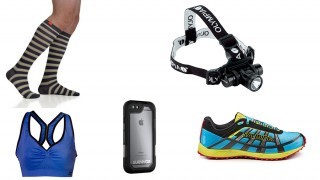
As the weather cools off, our editors are finding new gear to keep the mileage going. Here are some of our favorites:
Photo Gallery
1 of {count}
Back to Start
View Larger Image

Salming Trail T1
"Salming’s off-road model is a light trail-running shoe that pretty much gets it all right: The upper and fit is really comfortable but not snug, with a nice toebox; it’s breathable but also includes a thermoplastic wraparound overlay for added protection; it feels light and nimble, and, for a trail shoe, has plenty of flexibility without feeling flimsy. The outsole, while not made of the latest in sticky materials, is plenty grippy and durable. There’s no rock plate, which means you can feel every bit of the trail—for better and worse. And they’re not cheap. But as light-duty trail shoes go, it doesn’t get much better than this. "
—Adam Elder, managing editor ($140, salming.com)
View Larger Image

Griffin Survivor Summit Case
"A couple of the biggest challenges I face when running with my iPhone are keeping sweat, water and other elements off of it, and protecting it from shattering should I fall or drop it while out on the trails. The Griffin Survivor Summit case is a rugged shell that encapsulates the entire phone and protects it from just about anything nature might throw at it or expose it to. It fits comfortably in my hand or tucks into the back of my hydration pack on longer runs. I’m still able to access all the phone’s functions, including the camera when I want to snap a quick photo of the awesome environment I’m running in." —Mario Fraioli, senior editor ($50, griffintechnology.com)
View Larger Image

The Orb Massage Ball 5"
"Nothing does a better job of loosening up my leg muscles—particularly my hamstrings and calf muscles—than this baby. Foam rollers in general are God’s gift to endurance athletes, but the 5" Orb gets into even finer detail in targeting knots and massaging them out because you’re able to roll around the muscle in circles rather than just back and forth. I use the Orb all the time, and when I’m done, my kids play soccer in the house with it. A family-friendly self-massager."
—Ryan Wood, web editor ($20, pro-tecathletics.com)
Competitor.com.
Photos: Inaugural USA Half Marathon Invitational in San Diego
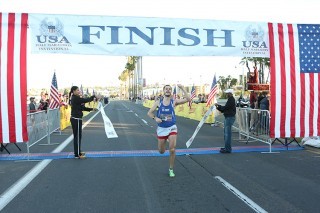
The inaugural USA Half Marathon Invitational took place on Saturday in San Diego. The race is unique in that it’s the only half marathon that required a qualifying time to gain entry, making for a fast field.
Sean Gildea won the men’s race in 1:07:35, while the women’s race was won by Katja Goldring in 1:14:19. In all, around 2,500 runners participated in the race, which started and finished in downtown San Diego .
Here are photos from the race, courtesy of the USA Half Marathon:
Photo Gallery
1 of {count}
Back to Start
View Larger Image

View Larger Image

View Larger Image

View Larger Image
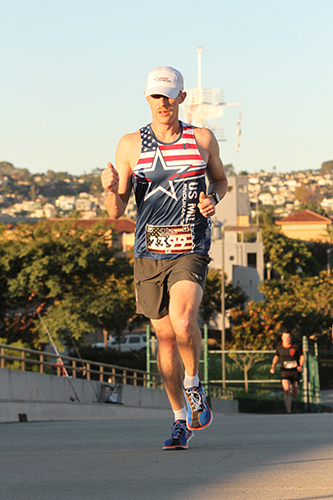
View Larger Image
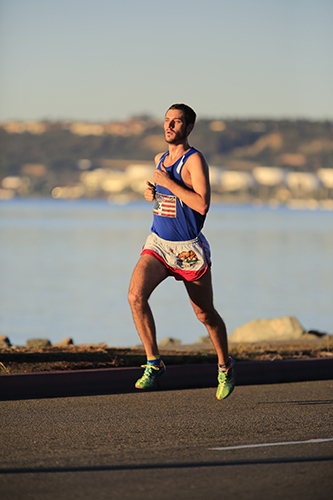
View Larger Image
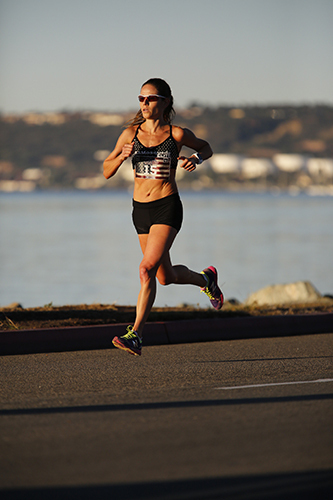
View Larger Image
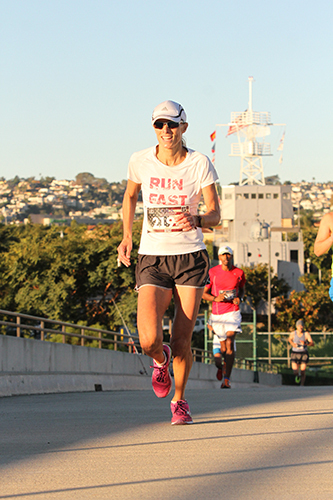
View Larger Image

View Larger Image

View Larger Image

View Larger Image

View Larger Image

View Larger Image
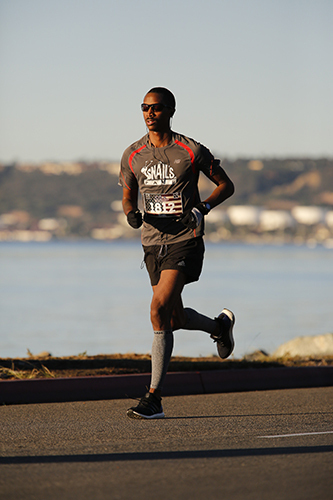
View Larger Image
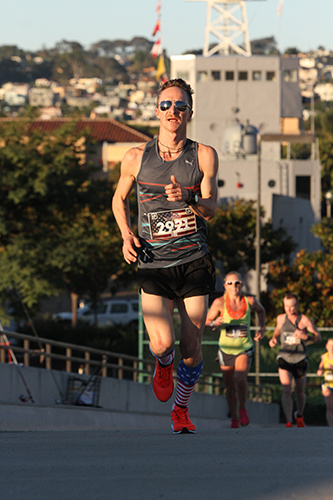
View Larger Image

View Larger Image
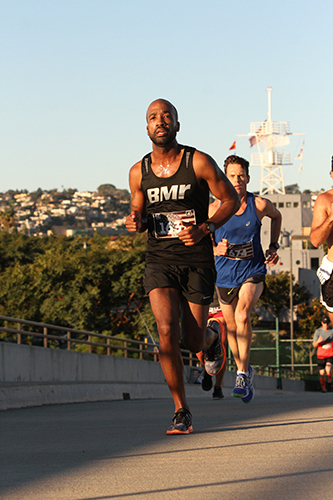
View Larger Image

View Larger Image

View Larger Image

View Larger Image
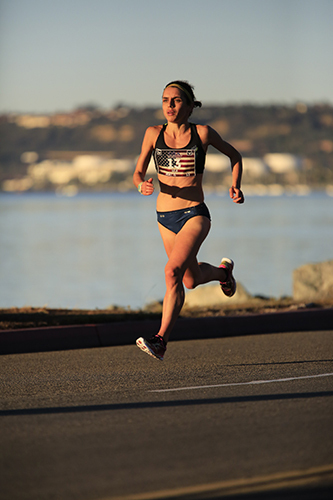
View Larger Image

View Larger Image

View Larger Image

View Larger Image

View Larger Image

View Larger Image

View Larger Image

View Larger Image

Related Galleries

Photos: The Inaugural Franklin Mountains Trail Run 50K

Photos: 2015 Rock ‘n’ Roll Las Vegas Marathon and 1/2

Photos: Sights and Scenery From Rock ‘n’ Roll Las Vegas

Photos: Brooks Rock ‘n’ Roll Las Vegas 5K

More Galleries
The post Photos: Inaugural USA Half Marathon Invitational in San Diego appeared first on Competitor.com.
November 22, 2015
Ask Mario: When Should I Strength Train?
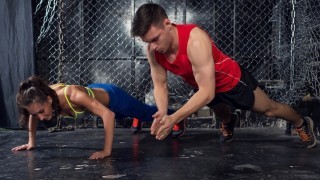
Photo: Shutterstock.com
Mario,
I’m having a hard time figuring out how to fit strength training workouts (1-2) into my weekly routine. Usually I do them on my recovery or rest days (so I don’t feel like a total slacker), but is this really the best way to go about it?
Thanks,
Gordon R.
Gordon,
Great question. One of the biggest challenges most runners face is how to fit everything—speed workouts, easy runs, tempo runs, long runs, strength workouts, etc.—into the course of a typical training week. As I’ve written about before, a lot of it comes down to prioritizing and a willingness to be flexible. The first step is identifying your key running workouts and spacing them out accordingly to ensure that you’re allowing for ample recovery time between your hardest sessions. If this means spreading things out over the course of 10-14 days instead of trying to cram it all into seven, so be it. Next, fill in the secondary workouts—such as strength training and cross-training—to complement those key running workouts. Finally, identify your recovery days and fill in with easy runs or complete rest.
My preferred strategy is to augment your key running workout days with a strength training session later in the day. Ideally, you’d do your running workout in the morning or at lunch and knock out the strength training session after work. This isn’t always possible for many people due to scheduling and time constraints, but it allows you to keep the hard days truly hard so that you can really recover and absorb the training on your easy days and rest days. An effective strength training session—done 1-2 times a week—should take you no more than 30-45 minutes and complement, not compromise, your most important running workouts. If doing a strength training workout as your second session of the day just isn’t possible, my next best recommendation is to do it the day after your key running workouts. That way, you’ll have gotten your key running workout out of the way first and should still have at least another day, if not 2-3, to recover until your next hard running session.
All the best,
Mario
Have a question for Mario you want answered? Submit it here.
The post Ask Mario: When Should I Strength Train? appeared first on Competitor.com.
Ryan Hall's Blog
- Ryan Hall's profile
- 21 followers



